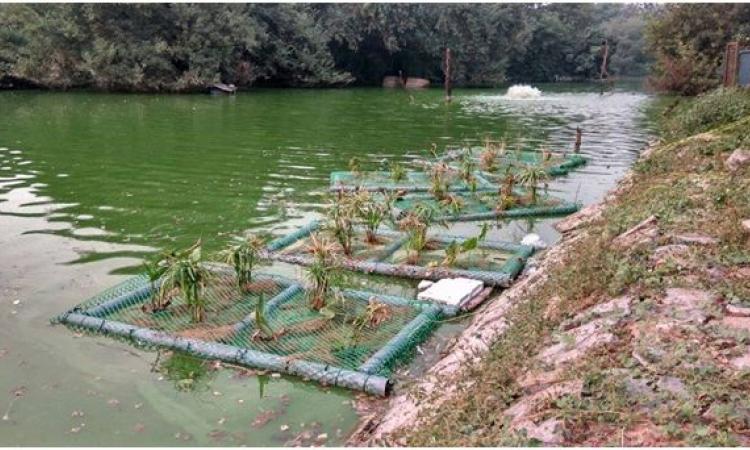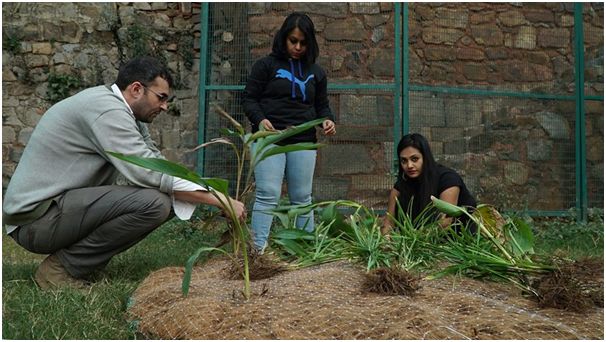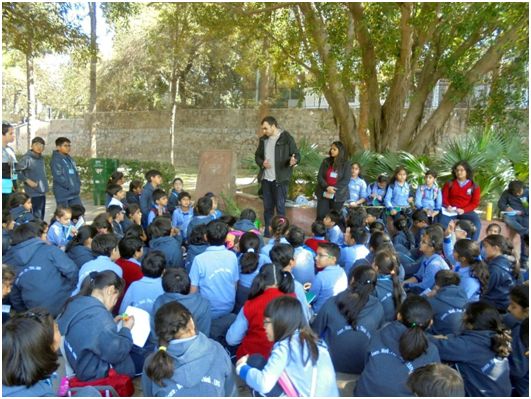
Located in the Hauz Khas urban village in the busy metropolis of Delhi is an exquisitely landscaped lush green patch. This deer park, with spotted deer, peacocks and numerous birds, leads to an incredibly beautiful lake. As per a plaque at the site, the lake is a part of the medieval (13th century) city of Delhi Sultanate. The Hauz Khas (royal lake) was originally built by Alauddin Khilji to supply water to the residents of the capital city, Siri.
The lake has been desilted several times but the most famous desiltation happened during the reign of Firoz Shah Tughlaq (1351-88) who got the silted tank excavated and the clogged inlet channels cleared. Given his keen sense of monumental architecture, a number of Islamic seminaries, mosques, tombs, pavilions and buildings were built around it. The area--now situated in an upper-class residential area of south Delhi with an artist’s village--and its upscale ambience draw in a lot of visitors and morning walkers.
Recent lake restoration efforts

The lake, originally spread over 125 acres, was 600m x 700m x 4m and its capacity at the end of every monsoon was reported to be 0.8 mcum. The lake has shrunk in size to 15 acres with a depth of 1 to 2.5 m. The porous rock bed and the resultant seepage and evaporation result in the lake drying up quickly. The lake needs to be regularly replenished as a result. The state of the lake can be attributed to siltation, encroachment of stormwater channels and lakebed and the change in the characteristics of the urbanising catchment. The quality of water available to replenish the lake is also deteriorating due to the conversion of natural stormwater channels into sewage disposal drains and the dumping of urban wastewaters into natural ecosystems. The lake complex was included within an urban district park under the Delhi Master Plan of 1961. The last time the lake became full was after the floods of 1964, but it again fell into neglect and went dry for the next 40 years. Filling it with stormwater would have meant bringing in the polluted waters that flowed into the stormwater drains.
Hauz Khas lake comes under the jurisdiction of the Delhi Development Authority (DDA). The Delhi high court, in the wake of the summer water crisis in 2002, ordered the DDA to revive the lake. Indian National Trust for Art and Cultural Heritage (INTACH), a non-profit organisation was engaged by the DDA to implement a project to divert two million litres of treated effluent a day from the Vasant Kunj Sewage Treatment Plant through a natural channel which also occasionally carries rainwater to the lake. The flow from the treatment plant to the lake passes through lagoons with aquatic plants such as duckweed and hyacinth, which absorb various organic pollutants through their root systems and transfer oxygen to the water, thereby reducing its organic load. From lagoons, the treated water is carried through a pipe in the stormwater channel. This ensures that further pollution does not affect the water quality en route. The water passes through a food chain that ensures that the organic matter is removed.
In 2017, the DDA selected Evolve Engineering, an organisation which specialises in innovative engineering solutions using constructed floating wetlands for lake restoration. Tarun Sebastian Nanda, founder and principal engineer of Evolve Engineering believes that instead of building more failing sewage treatment plants, there is a need to turn our existing lakes and rivers into water-purifying wetland ecosystems that can cope with the amount of waste we dump inside.

Tarun, a Dutch-Indian and a British citizen, moved to India from England almost seven years ago to know the country better. He makes use of technologies to offset the damage to the lakes; he has helped two NGOs build private wetlands in two slums in Delhi. “Instead of using the conventional model of managing urban wastewater through drainage network and sewage treatment plants, we do in-situ treatment by converting the drains and lakes into water-purifying wetland ecosystems. Conventional models of treatment are usually faced with problems like unregulated disposal of sewage from growing residential and industrial areas; recurrent power cuts result in the release of untreated wastewater and the high cost of privately managed infrastructure make them unviable,” says Nanda.
Floating islands and plants purify water
In the floating wetlands, plants are grown on a mat built with wire mesh, drainage pipes and used water bottles. The miniature floating wetlands will naturally purify the water by eradicating algae and absorbing nitrates, phosphates and other metals.

“For our floating and constructed wetlands, we use phytoremediation and rely wholly on natural processes such as microbes, physical filtration, adsorption and the uptake of nutrients by wetland plants to purify water. We do not use machinery. Our chemical or electricity requirements and operating costs are negligible compared to what a sewage treatment plant requires. These wetlands are constructed inside existing drains and water bodies, so, there is no additional land requirement while creating attractive recreational areas as well as natural habitats for plants, birds and fishes across the city,” says Debayani Panja, research associate at CUTS Institute for Regulation and Competition, who works with Tarun on this project.
The plan is to construct 300 sqm of floating wetlands adjacent to the lake--10,000 square metres of floating wetlands and 45,000 wetland plants. This will purify the water and the surrounding air as well as provide new habitat for birds, insects and wildlife. “People now come forward to adopt islands. A square metre of floating wetlands costs around Rs 4,000 to 5,000. Floating wetlands take less than a day to be made and it is also possible to make them offsite and transport them to where you want to place them. For funds, we do not depend on the government and are raised through conducting training sessions on how to construct the islands. A training fee of Rs 500 per person is charged besides collecting donations through the fundraiser called Adopt an Island--Hauz Khas Lake. The idea is to also tap CSR funding. Four to five people can get together to build a floating wetland. Donors adopting an island can customise it and have a name tag on it,” says Nanda.